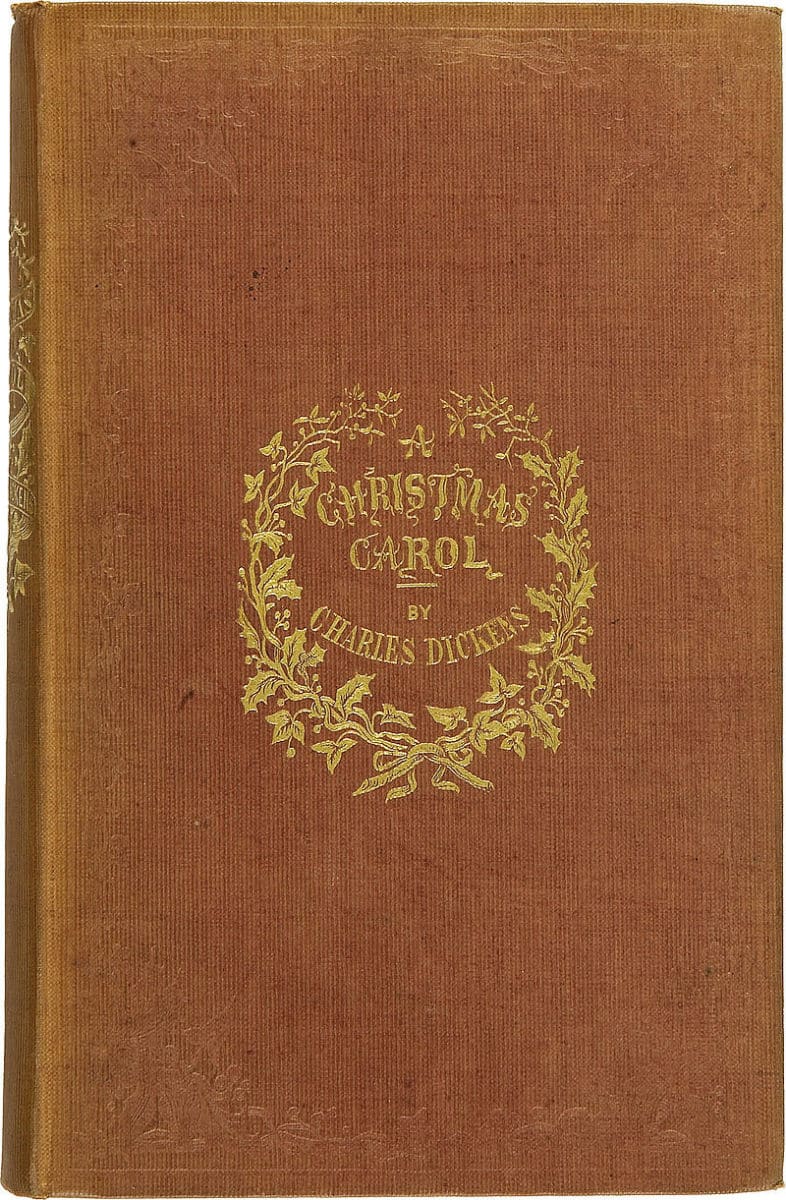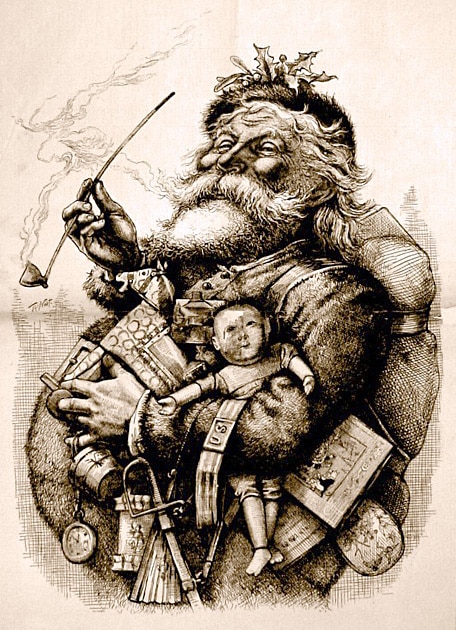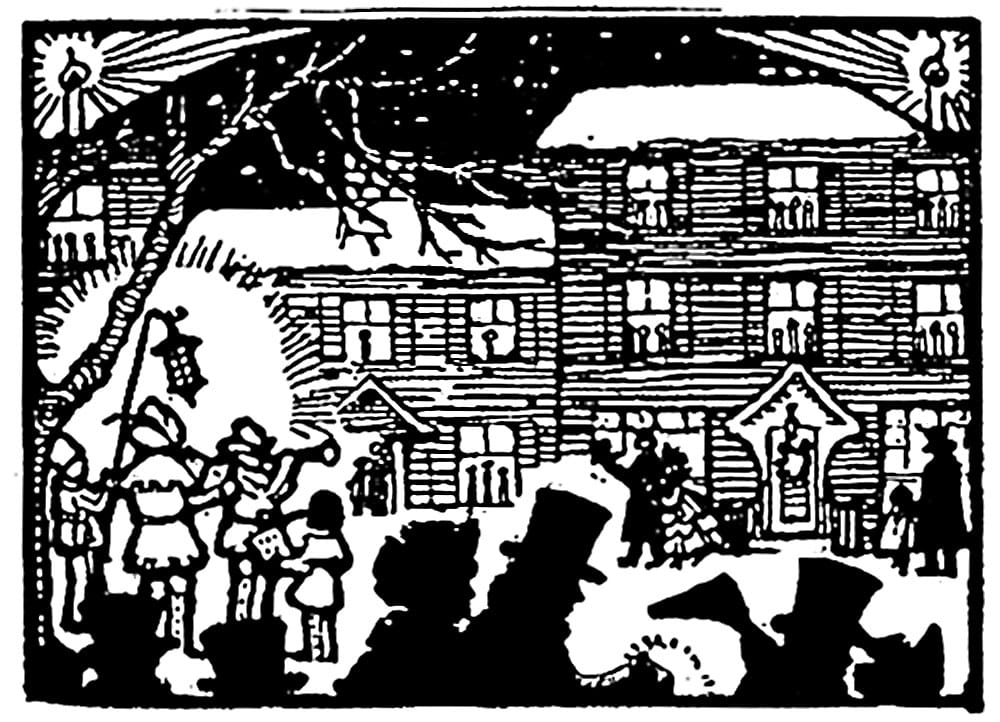It was always a bit of a debauch, really. Misrule, mirth, mayhem, mischief and malice (and those are only the M’s) that eventually made Christmas insupportable.
Cold and want were at the bottom of it all. Winters were severe. Harvest long over, days were dull and short, the ground hard, there was snow, rivers were frozen and life seemed at an end. Something had to be done to make the long nights and cold days bearable.
For the ancient Roman it was the winter festival, Saturnalia, honoring the god Saturn that made the season tolerable. Brumalia, the birthday of the unconquered sun, held on the twenty second of December, was another. When Christianity began to establish a toe-hold, the birth of Jesus Christ was conveniently celebrated around the same already-established holiday time. It wasn’t until the 4th century that the date of the nativity was arbitrarily and officially proclaimed as December 25th. Thirteen hundred years later the Puritan complaint, accurate as it may have been, that Christmas was a pagan holiday co-opted by Christians, should have come as no surprise. The season was characterized by merry-making, eating, and drinking. Small tokens and gifts were exchanged, and evergreen boughs were brought indoors as a reminder that life still stirred somewhere.

The most persistent element of the centuries’ long traditions was the intentional reversal of the social order; masters waited on servants and suffered their jibes and demands. There was little that was religious or reverent about the celebrations (a complaint still heard today).
By the 12th century, the character of Christmas season was profoundly ritualized. The designated Lord of Misrule, the Abbot of Unreason and his court, presided over a topsy-turvy world — and it was not always nice. Christmas time was for fanciful costuming, masking and mummery, vicious parodying of the rituals of church, state and society, veiled threats on person and property. Wassailing, today an innocent form of caroling, was a house to house begging ritual that was a put-up-or-suffer-the-consequences situation. For the next three hundred years this was Christmas.
Then, in 1647, under the tight-fisted Puritan Oliver Cromwell, Christmas was abolished in England. Churches were locked and shops were ordered by law to remain open. Anyone caught celebrating Christmas, a Popish day “dedicated to excess,” would be fined or imprisoned. Harsh.
In a Puritan Boston of 1712, Cotton Mather unreeled his laundry list of anti-Christmas sentiment claiming that the “Feast of Christ’s Nativity is spent in Reveling, Dicing, Carding, Masking and in all Licentious Liberty…by Mad Mirth, by Long Eating, by Hard Drinking, by Lewd Gaming, by Rude Reveling …”
A conspiracy to rob this boisterous, bawdy bash of its rude revelatory potential was simultaneously undertaken on both sides of the Atlantic. The mid-nineteenth century Americans and English had had enough. It was the phenomenal nexus of a socially conscious Royal family, the advent of the industrialization in England and America, and two writers that combined to establish the elements of Christmas we celebrate today.

The signal event in America was brought about by a land-rich New York professor of Hebrew named Clement Moore. As an entertainment for his children (doesn’t it always start that way) he penned, A Visit from St. Nicholas (T’was the night before Christmas…) in 1823 borrowing the characteristics of Santa Claus from Washington Irving’s, Knickerbocker’s History of 1809. Moore’s bandy-legged, sack-toting, pipe-smoking, “jolly old elf” with his “broad face and a little round belly; that shook when he laughed like a bowlful of jelly,” was more a benign Djinn than the roly-poly Santa to come. Previously, Father Christmas bore a club, had a wreath of holly round his head, mischief in his eyes, and a brimming glass in his hand. He was more party animal than the child loving, gentle, generous gift giver he would, alas, become. And while Irving may have made Santa recognizable, Moore attempted to make him more acceptable. The final transformation was soon to come.
In England it was Charles Dickens who remade the holiday. Dashed off in three months, A Christmas Carol sold 6,000 copies at five shillings apiece in 1843. If Christmas in the long ago past had had it’s malicious side, the Christmas of Charles Dickens was all about sharing, kindness, love, snowfalls, lamplight, sleigh rides, ghosts at midnight, turkeys, plum puddings, last chances and redemption through good works.

Scrooge had been through Christmases past. He knew them for what they were (not what they would soon become). Humbug! was the right response of a responsible man. Humbug! a hoax, a folly, a jest in bad taste. So we should not be amazed to find Scrooge railing: ‘if I could work my will, every idiot who goes about with Merry Christmas on his lips should be boiled with his own pudding and buried with a stick of holly through his heart’. The old man was no fan of misrule, frippery and frolic.
The metamorphosis of the humbug spouting Uncle Ebenezer into a merry, kindly old man evidently touched a chord in the hardening heart of a newly industrialized society. A Christmas Carol transcended mere literature and passed into the realm of legend. Scrooge went from being a name to a noun, and the story quickly became part of the common shared lore of the English-speaking world. Today when someone utters the phrase “the Christmas spirit,” it is an image decorated by Dickens that comes to mind. No small achievement. (Further corroboration, as if you needed it, can be found in, The Man Who Invented Christmas, by Les Standiford.)
The transformation from a noisy, bacchanalian, often-confrontational, clash between classes was subdued, then domesticated. It was also during this time that children went from the “stranger at the gate” to cherished members of the household. The old tradition of bestowing charity on the poor by the more fortunate patron morphed to an exchange between parents and children.
The more familiar S. Claus that lives on today was rounded out (so to speak) in 1863 by political cartoonist, Thomas Nast. Moore and co-conspirators eventually would stamp out the rowdy, raucous, roving, rabble-rousers and covert Christmas into an indoor family-centered ‘round-the-hearth’ holiday.
On, then, to Christmas dinner. Since remnants undeniably still exist of excesses of drinking, feasting and fun let’s stop pretending: we miss all that!
Let’s have a big Wassail bowl, turkey and ham, gooey potatoes rich with cream and cheese, a sugar plum chutney, a Chocolate Plum Pudding Cake and some Humbugs for good measure. Laugh out loud, snap the crackers, thump the table, ask for “more please, Sir!” — go overboard at the groaning board, make merry and mischief. Yikes! It’s Christmas. Misrule rules.
These recipes ought to help. ![]()

